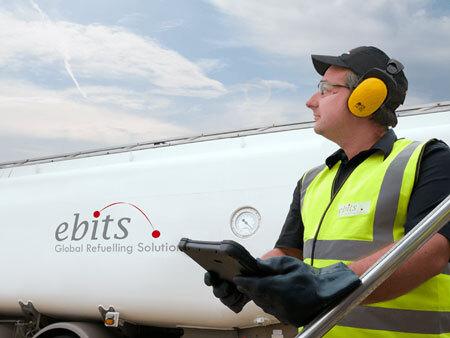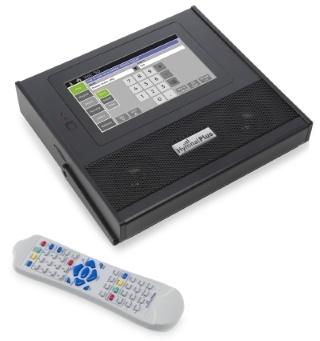

Designing firmware, operating systems and application software for electronics is a complex and challenging process. With a lot of different factors to be taken into account when designing new electronic devices, it is important to have an in-depth knowledge of firmware, OS and application software and how they each relate to one another.
At DSL, we have a team of experts who are dedicated to this task. We work closely with our clients to understand their specific needs and requirements. We then use our knowledge and experience to design a solution that will meet those needs. Our goal is always to provide our clients with the best possible product, and we are committed to continually improving our design process in order to achieve this goal.
Markets we serve
- Military and defence
- Marine and navy
- Automation and control
- Security and access control
- Communications
- Medical and healthcare
Challenges of Designing Electronics OS, Firmware and Software
 Designing software for electronic devices is a complex and challenging process. There are many different types of software that must be taken into account when designing new electronic devices, including firmware, OS and application software.
Designing software for electronic devices is a complex and challenging process. There are many different types of software that must be taken into account when designing new electronic devices, including firmware, OS and application software.
Each of these types of software serves a different purpose and must be carefully designed to work together seamlessly. In addition, the software must be optimised for the specific hardware it will be running on.
Getting all of these elements to work together properly is a daunting task, but the rewards can be great. When done right, the software can make an electronic device more user-friendly, efficient and reliable. The challenges of designing software for electronics are well worth the effort and at DSL we are very passionate about getting it right.
Our Development Process
The first step is to understand the capabilities and limitations of the hardware. This requires a deep understanding of the underlying hardware architecture and how it can be configured to meet the requirements of the software.
The next step is to design the software itself. This involves specifying the functionality that the software must provide, designing the algorithms that will be used to implement that functionality, and writing code that is both efficient and robust.
The firmware, OS and application software must be carefully designed to work together seamlessly. Otherwise, the electronic device will not function properly. Finally, the software must be tested and debugged to ensure that it works correctly.
Design Challenges
One of the biggest challenges of designing software and firmware for electronics is that the hardware is constantly changing. New generations of CPUs and GPUs are released every year, and each new generation brings its own set of challenges. In addition, design constraints such as power consumption and heat dissipation must be considered. As a result, designing software for electronics is an ongoing process that requires constant adaptability and staying up to date with the latest developments.
Another challenge is that there are many different types of software that must be taken into account when designing new electronic devices. Each type of software has its own set of challenges and must be carefully designed to work together seamlessly. In addition, the software must be optimised for the specific hardware it will be running on.
The DSL Approach
We firmly believe that successful electronic solutions require a multi-disciplinary approach, which is why our team of engineers have expertise in hardware, firmware and software development. We are confident that this holistic approach results in better quality products that are more resistant to the challenges of the modern world. When it comes to PCB design, we always include firmware development to ensure that the hardware will operate correctly. This attention to detail has led to many satisfied customers who have come to rely on us for all their electronic design needs.
At DSL, our engineering team works collaboratively to ensure that the optimal choices are made on both fronts to create the solution that best meets our customers’ requirements. When it comes to software, we have a tried and tested network model. If we can’t meet the specific software design requirement in-house, we will partner with a selected software house who can, but will manage the process so that our client sees it as one seamless development team. This approach allows us to be flexible and responsive to our clients’ needs while still maintaining the high standards of quality and service that our customers have come to expect from us.
Alignment with Electronic Design
Our firmware and software development process is closely aligned with our electronic design process, with an emphasis on comprehensive scoping of requirements in parallel with the electronic design aspects of the work. This ensures that there is close synergy between all the important stages of development. Our team of experienced engineers work closely together to ensure that all components of the project are properly coordinated. This includes ensuring that the firmware and software meet the specific requirements of the proposed work, as well as being compatible with the hardware. By taking this holistic approach, we can be confident that our products will meet the highest standards and deliver optimal performance.
Before we can begin software development, we need to scope out the project and define the requirements. Once that’s done, we can start development. We write the firmware when we have developed the prototype PCB. Once we are happy with it, we then deploy and test it internally against the signed off specification. After that, we hand over to our clients to test the hardware, firmware and software together. This process ensures that everything works correctly and meets the specification.
Embedded Firmware Development
 Developing firmware requires a deep understanding of both hardware and software. At DSL, our team of embedded hardware and software engineers have the knowledge and skills necessary to write firmware that meets your specific needs. We invest in the latest tools and training to ensure that our firmware is efficient and well-optimised. In addition, we are experienced in developing drivers to bridge the gap between hardware and an embedded operating system. As a result, we can provide you with the customised firmware solution that you need to bring your project to life.
Developing firmware requires a deep understanding of both hardware and software. At DSL, our team of embedded hardware and software engineers have the knowledge and skills necessary to write firmware that meets your specific needs. We invest in the latest tools and training to ensure that our firmware is efficient and well-optimised. In addition, we are experienced in developing drivers to bridge the gap between hardware and an embedded operating system. As a result, we can provide you with the customised firmware solution that you need to bring your project to life.
Embedded Operating Systems
Embedded systems are usually designed to perform a specific task, or set of tasks, and are not general-purpose computers. As a result, they often have very specific requirements that must be met by the OS in order to function properly. For example, an embedded system might require real-time performance, meaning that the OS must be able to respond to events within a very short time frame. Or it might need to be able to run for long periods of time without crashing or needing to be rebooted.
These sorts of requirements often mean that a standard desktop OS cannot be used for an embedded system. Instead, a specialised embedded operating system is required. At DSL, we have extensive experience developing solutions that use embedded OS, and our team can help you choose the right one for your projects.
Application Software Development
At DSL, we are committed to providing our clients with the best possible service. That’s why we offer a fully turnkey solution. We will either complete your software development in-house or, where we don’t have the specialist skills, outsource to a hand-picked specialist software development house who we then manage as if they were an extension of our team.
By developing both hardware, firmware and software in parallel, we ensure that knowledge is shared, enabling us to rapidly respond to the bespoke solution requirements and needs of projects, creating greater synergies between functions that ultimately save time and money on the end project deliverable.
Case Studies: OS, Firmware and Software Development Examples

Example: Data interface to track fuel dispensing for aircraft via Bluetooth
One of our commissions was to design a product that uses Bluetooth to help with fuel dispensing tracking for aircraft. This is a vital data interface between the vehicle and the office system and the client needed a one stop shop partner who could manage the whole process. This included designing, building, testing and certifying the product.
We designed the AvR.VI hardware, specified the enclosure and wrote the firmware. The one of a kind patent pending AvR.VI is the key hub of connectivity to the vehicle and we explicitly designed it to future proof integration of the vehicle system with the data capturing system. It connects to the system device that runs the AvR application via Bluetooth.
Example: Digital worship music solution
Another commission was to design and manufacture a new, better version of Hymn Technology’s digital music product. This provides a long term and inexpensive solution for churches, schools and those who need a ready-to-play, portable music repertoire. The client needed to find a design firm who not only had the expertise to design software to the brief, but who could manufacture the product as well.
Example: Power and utilities monitoring
This commission involved developing an intelligent remote telemetry unit fitted with a range of both analogue and digital I/O interfaces to monitor information on utilities sites and relay that information to a central control system. Replacing an existing modular solution, the brief also involved reducing the overall unit cost, addressing obsolescence issues with the existing product and achieving the input accuracy, wide I/O capability and performance at the right price for the client’s market.
Furthermore we had to create a solution that kept a familiar interface for users and firmware legibility for the client as well as manage the development and support of the embedded OS (Windows Embedded Compact 2013).
The solution needed to support several different types of communication interfaces and also required us to manage CE certification and to pass EU EMC regulations. We created a solution where full IP rights of the design were provided to the customer while we retained copies of all the implementation details in case the client wanted to revisit the design and implement changes at a later date.
Why DSL?
As you can see, developing firmware for embedded systems requires a unique set of skills and knowledge. At DSL our software engineering team has the experience and expertise to develop software solutions and custom firmware for your specific needs. We use the latest systems, tools and technologies to ensure efficient code development and runtime performance. Our goal is to make integrating non-standard functionality seamless, and we are committed to providing our clients with the best possible results to their exact specifications.
If you need custom OS, firmware and software design for your projects, contact us today. We’ll be happy to discuss your requirements and offer new insights and a solution that meets your needs from beginning to end.

